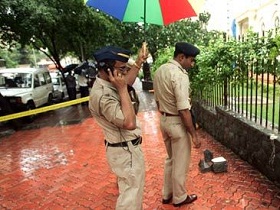Interested in learning about investigative journalism in India? Do you want to understand the limits of investigative journalism within India? Read our guide for more facts and information…
Investigative journalism is but one of many styles of reporting seen in newspapers around the world. This style of journalism is typically associated with crime, political corruption or scandal; however, the topics are not limited to these areas. For reporters who write articles in the investigative style the topic must be of deep interest not only to themselves and their paper but also to the general population. The goal of investigative journalism is to discover and reveal truth in a public forum. Journalists often find themselves working on an investigative piece before it is published, commonly in the form of an expose.
Limits
The style of investigative journalism emerged in the press of India in the 1980s. The turn to the style was prompted by political turmoil such as the return to power of Mrs. Gandhi. Originally investigative pieces were typically featured in magazines; when magazine circulation rose, newspapers responded and shed many of their past conservative techniques. The pieces of investigative journalism circulated in India are often written in either a partisan style or regarded as sensational. The pieces run in Indian newspapers are often also criticized as serving more as an advertisement than as a true journalistic piece.
Many critics claim that there are too many limits on investigative journalism in India to allow the style to flourish. In India many media outlets, such as radio channels, are limited and often governmentally regulated. It is also of significance that foreign media outlets are limited as there is a fear of these outlets out competing the domestic news media. Investigative journalism is also limited as there is limited regional media. The press in India is generally owned by industrialists; this is problematic for investigative journalism as the style is discouraged for fear of government harassment. It is also of note that in order for investigative journalism to be successful a right to information must exist and in India information is not always easily accessed as Indian bureaucracy does not easily part with information.
Landmark Examples
Since the 1980s when investigative journalism emerged in India there have been a few landmark cases. The Bofurs gun scandal is considered one of the first and most influential pieces of Indian investigative journalism. This scandal involved then Prime Minister Gandhi who was accused of receiving kickbacks from the Bofurs Company. This piece of writing in part led to the defeat of Prime Minister Gandhi in the next election. In 1996 another landmark case emerged when the story of the Fodder scam broke. This scam again involved the Indian government as it was stated that embezzlement from the treasury of the Indian state Bihar had been ongoing. Another piece that was important was the piece concerning the Jain Diary Case which was a political scandal where the government had secretly received funding. Other pieces of investigative journalism in India worth noting are the Petrol Pumps largesse scandal and Satyendra Dubey’s murder case.





